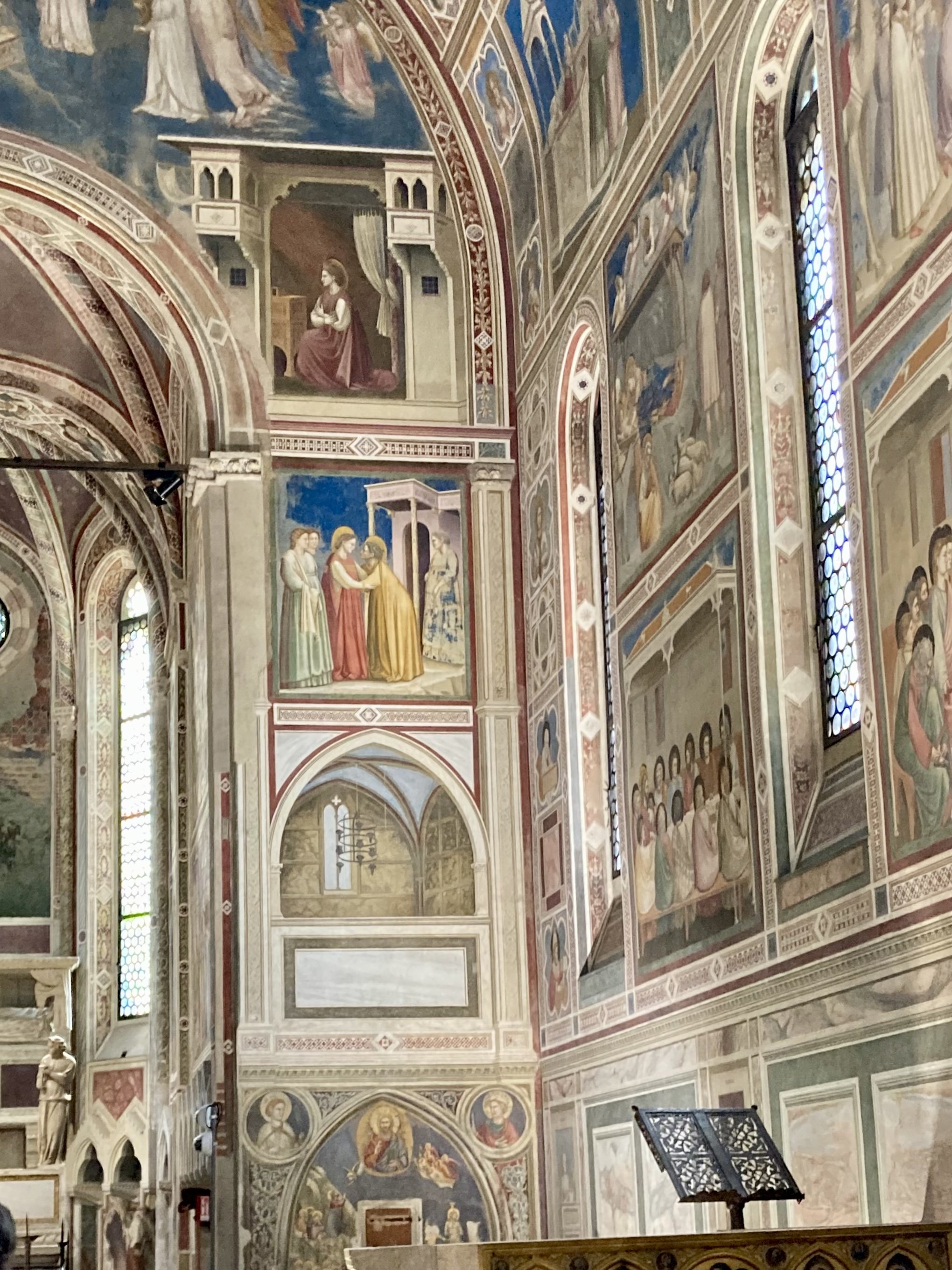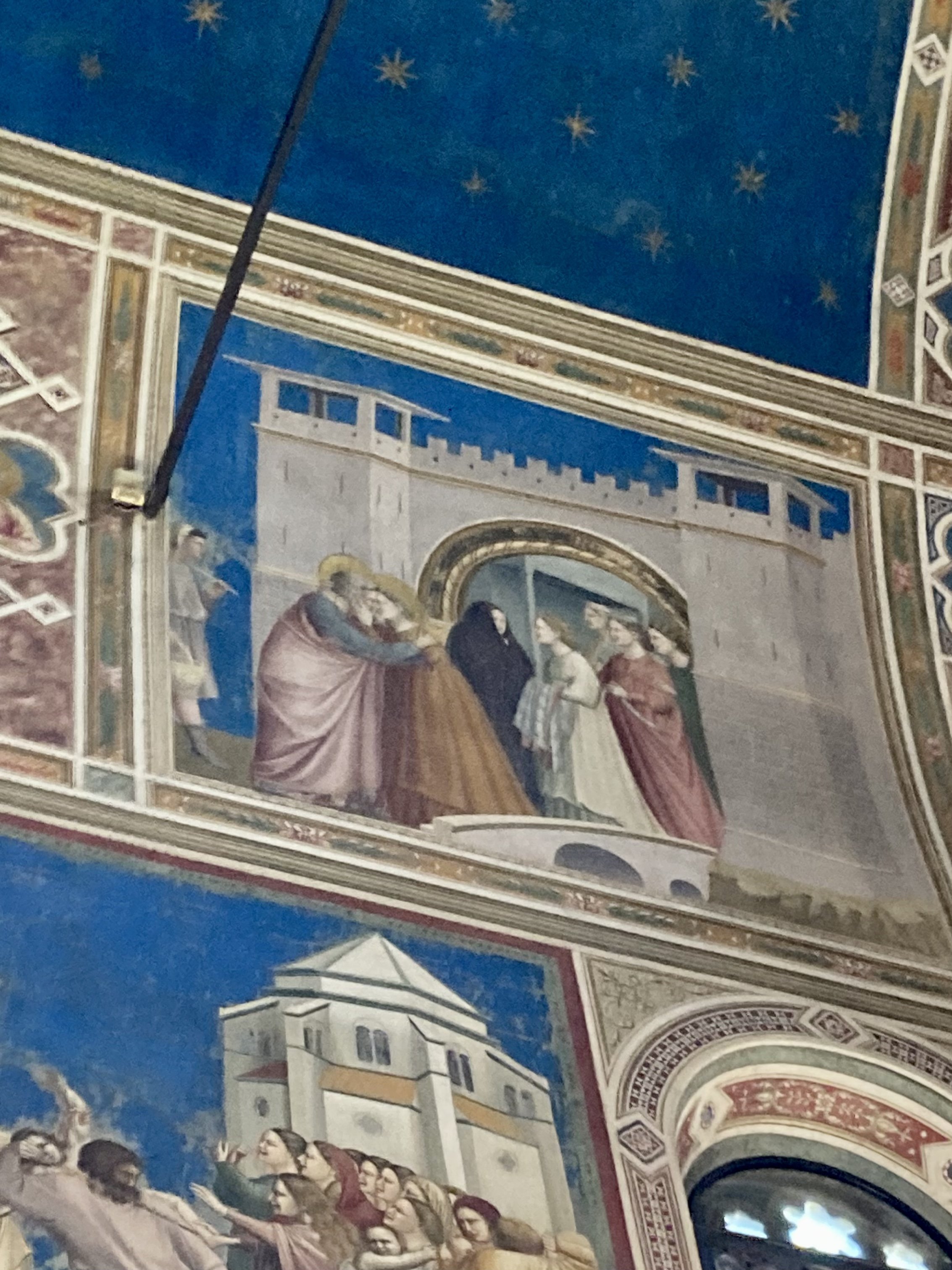Stars shining on a blue sky
Padova is just a short train ride away from Venice. We struggle carrying the backpacks in the scolding sun, but as soon as we enter the bar-filled, grotto style park where both the Scrovegni Chapel and our apartment for the night is located, we feel better.
Instead of seeing the city, we hang out in the park and eat pizza at the family restaurant we live above.
Early up next morning to see Giotto’s chapel. The roof has stars that mirrors the chapel of When the Body says Yes that we saw the day before - and even the colorful textiles and all the bodies filling the the pictures below seem oddly related. Happy accidents that makes it look like it’s a well curated trip.
The story of Maria’s parents Anne and Joachim touches me the most. The struggle to conceive a child feels like such a contemporary story, and their face expressions are fresh as the day they where made (720 years ago). They bend awkwardly toward each other to kiss, like they are close but also shy. Not for the other, they are clearly close, but as if they know we stand here now watching them.
In the end Joachim goes away for 5 months, and when he comes back, Anne is pregnant. He embraces the situation, and the whole New Testament then follows. But since this elderly couple are given so much space, it is almost like it was Anne and Joachim who pushes the whole and well known story forward.
After the familiar scenes, we are brought into the future. The good - and the bad:
Colorful salvation or gray and brutal condemnation. The kid finds it most striking that a poor guy is about to loos his precious parts to a devouring devil. I don’t know if it was painted as scary or funny, most likely the first, but I like to think the latter. A little horror comedy in the middle of all the gloriousness.
There are all kind of bodies, pretty dressed up ones or naked childlike ones, looking sweet as they climb out of their colorful box-like coffins, on their way to eternity.
Frescoes and watercolors have so much in common. Both are techniques where the first stroke stands. You can’t redo or change. The moment of creation and the motief share the surface, and makes it feel so immediate and close. Relationships, interactions, friendly and less friendly meetings, stories as old when they where painted, as the paintings are old now, and still relatable.
We tourists are only allowed inside for ridiculously short 15 minutes, and a strikt guards job is to chase us out to let a new group in. No one wants to leave.
The picture gallery adjacent to the chapel is also fun. Quite a selection is served on plates:
A brake at a coffe kiosk, first just a snack, we can’t help ourself and also have the most delicate tiny cakes.
The kids drawing pad is always with.
Then it’s the cathedral where there are long lines to honor St Anthony - the saint of lost things, even lost people. No wonder he’s a popular one.
Last stop is the botanical garden, designed in 1545 it is the oldest university garden in the world in its original form.
A remarkable place, with a circular shape that both reminds me of an old pattern, like the one of a Persian rug, and a modern one, like scientific graphics. Wasn’t that what the Renaissance was all about, studying the past to create spaces for new knowledge?
A garden is never the same, and there aren’t much indication of which plants are the same types as in the beginning. But the plant selection isn’t spectacular, and I wonder if that is because it’s kept similar to its original collection.
No time to search for restaurant, because our train leaves soon, but the first and best place on our path is really also the best. Wonderful friendly service, perfect food and Prosecco. I smile too much, and I almost cry again. A good thing we’re leaving Italy. This wonderfulness is going to my head.















